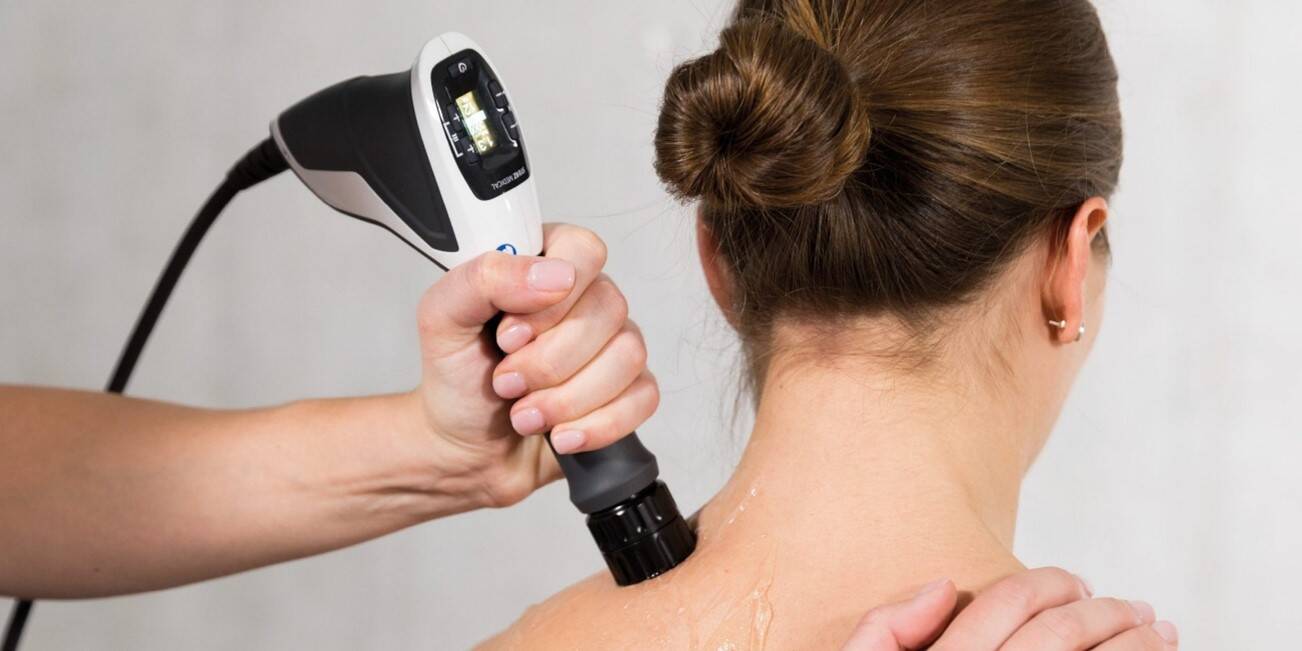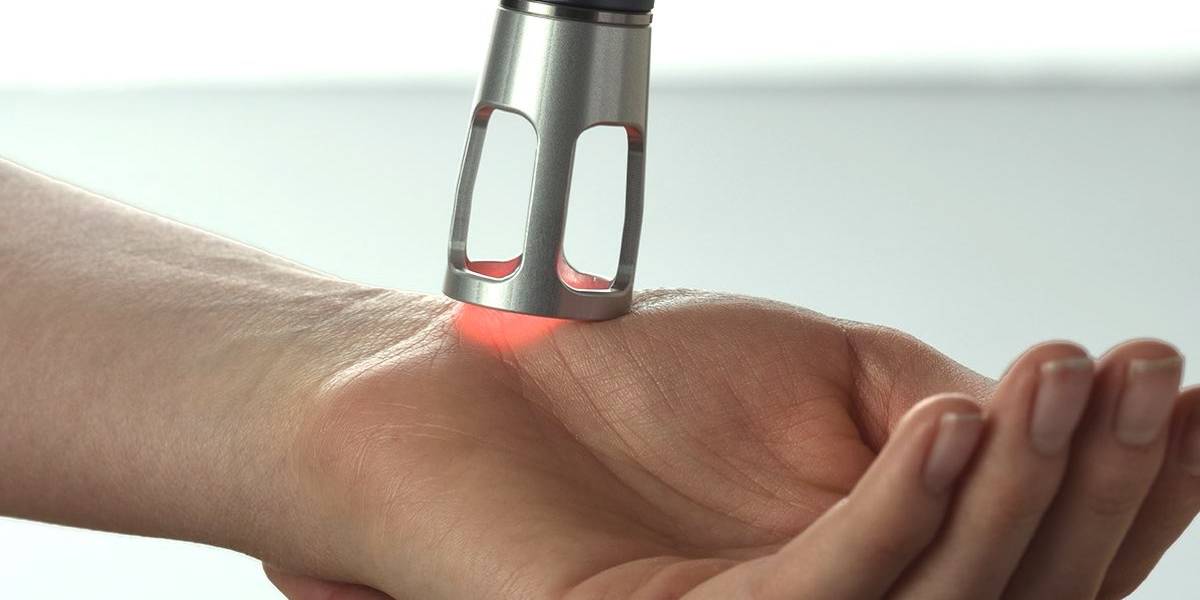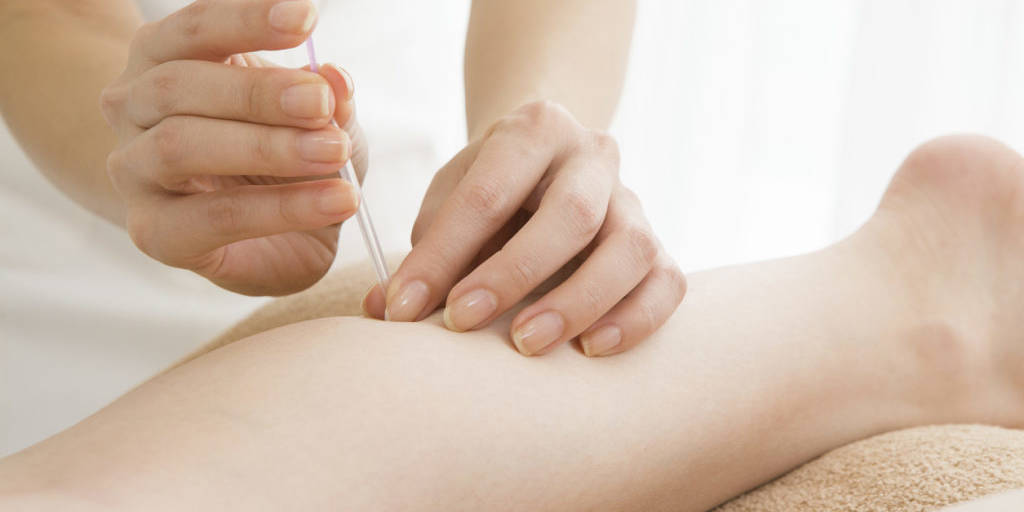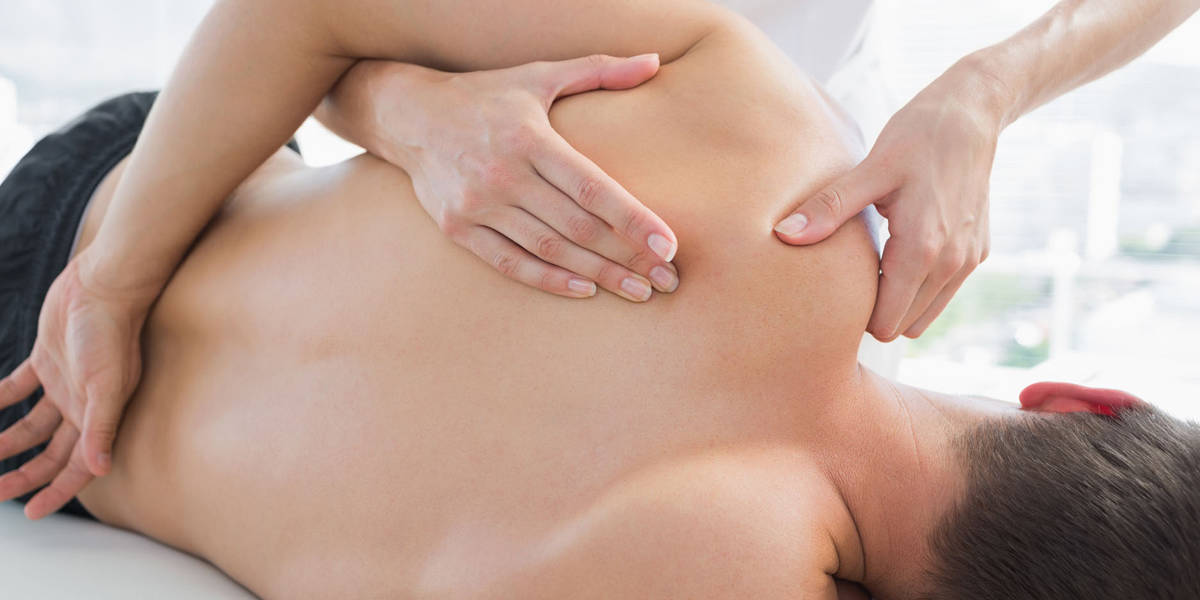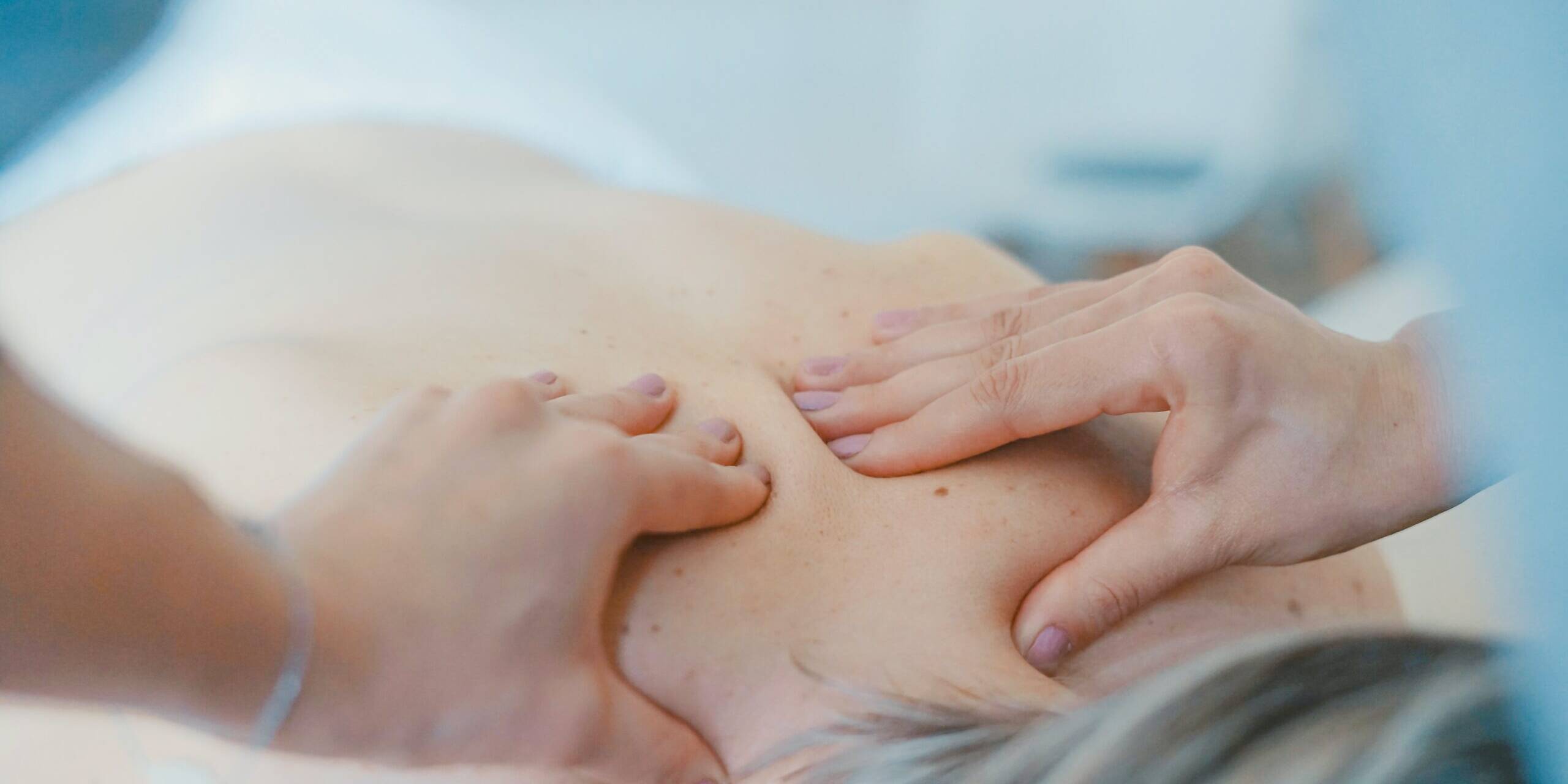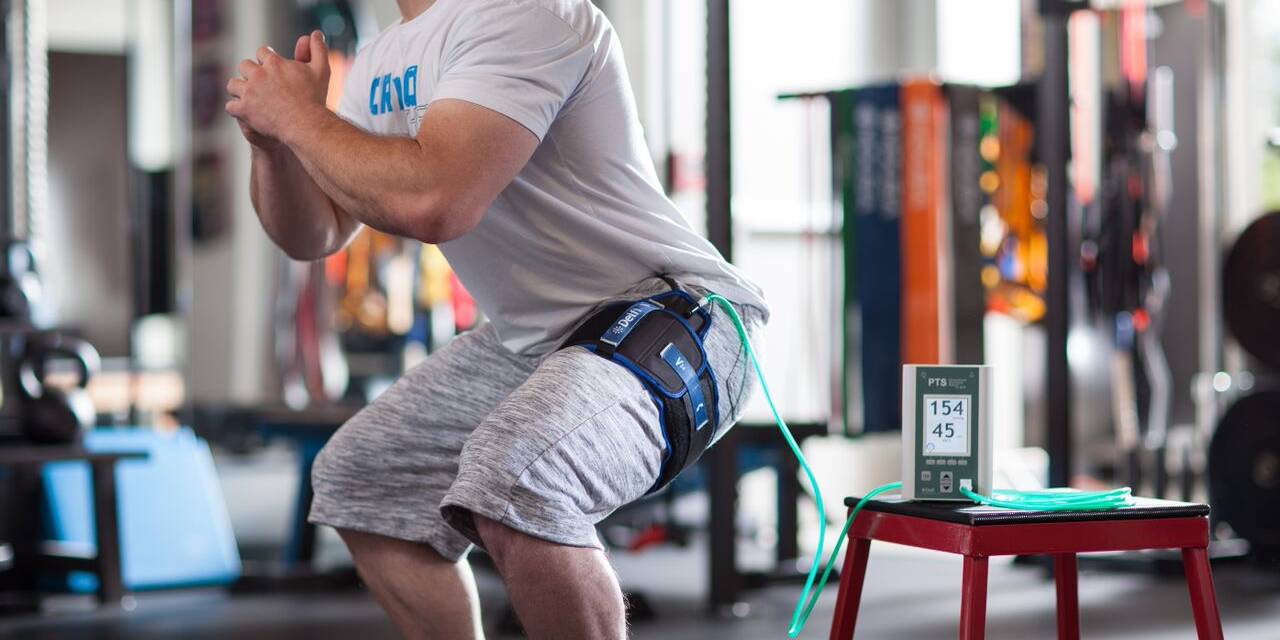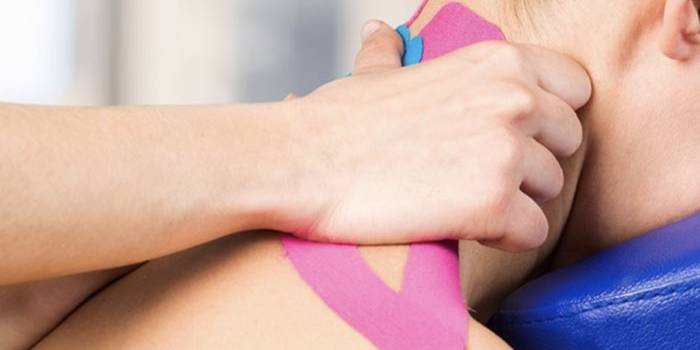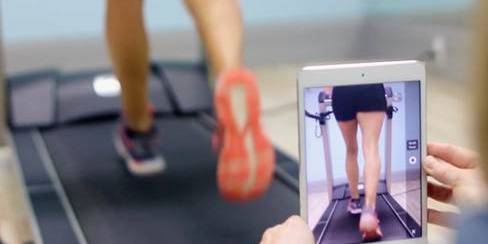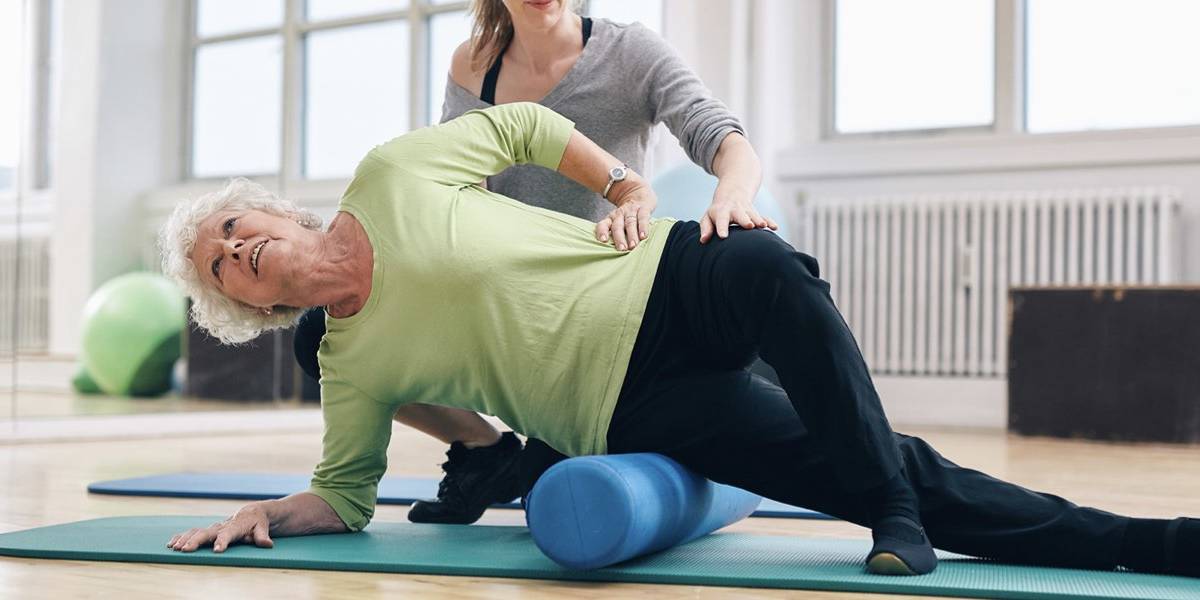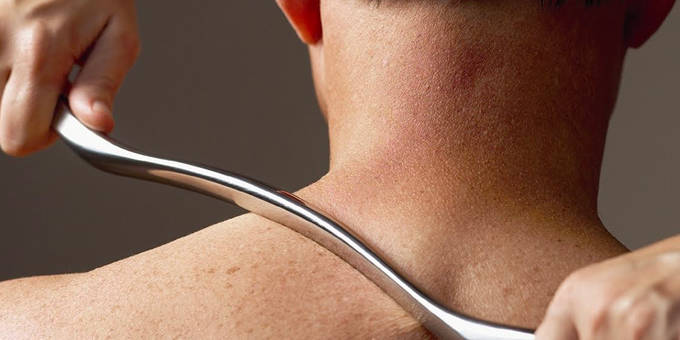Physical Therapy for Achilles Tendonitis in Washington D.C.
PT Services for Achilles Tendonitis
What is Achilles tendonitis?
Achilles tendonitis, also known as Achilles tendinitis, is characterized by inflammation of the Achilles tendon, which is the band of tissue connecting the calf muscles at the back of the lower leg to the heel bone. It occurs due to overuse or repetitive strain on the tendon, leading to pain and stiffness in the back of the ankle or heel. Symptoms may worsen with physical activity and can range from mild discomfort to severe pain and swelling. If left untreated, Achilles tendonitis can increase the risk of tendon rupture. Treatment usually involves rest, ice, stretching exercises, physical therapy, and in some cases, medication or orthotic devices.

Does physical therapy help Achilles tendonitis?
Physical therapy for Achilles tendonitis can be very effective. The goals of physical therapy for Achilles tendonitis include reducing pain and inflammation, improving tendon strength and flexibility, preventing further injury, and restoring normal function. Here are some ways physical therapy may help:
- Pain Reduction: Using ice, compression, and laser to decrease pain and swelling.
- Stretching: Enhancing calf and Achilles flexibility to reduce tendon stress.
- Strengthening: Building calf muscle strength to support the Achilles and prevent injuries.
- Manual Therapy: Mobilizing surrounding tissues to improve flexibility and circulation.
- Education: Advising on activity modifications and proper footwear to avoid aggravating the tendon.
- Eccentric Training: Promoting tendon healing through specific strengthening exercises.
- Gait Analysis: Correcting walking or running patterns to minimize tendon strain.
At Release Physical Therapy we will customize your treatment plan to optimize your speed of recovery!
How long is physical therapy after Achilles tendon surgery?
The duration of physical therapy after Achilles tendon surgery varies depending on the extent of the surgery, your health status, the specific protocol recommended by the surgeon, and your progress during rehabilitation. Your therapist at Release Physical Therapy will work with you and your surgeon to make sure your protocol is followed. This general timeline provides an idea of what to expect:
- Initial Recovery (0-6 Weeks):
Focus on protecting the repair, managing pain, and inflammation. Activities include non-weight-bearing and gentle range-of-motion exercises within cast or boot limits. - Early Rehabilitation (6-12 Weeks):
Gradual weight-bearing introduction and progression to gentle strengthening, flexibility, and balance exercises. - Intermediate Rehabilitation (3-6 Months):
Increase in activity level with more intensive strengthening, flexibility work, and functional activities. - Advanced Rehabilitation (6-12 Months):
Focus on full strength, endurance, flexibility restoration, and return to activities or sports.
At Release Physical Therapy, we may use Blood Flow Restriction during your rehabilitation. Studies have shown a significant increase in calf strength in patients who received BFR during post-Achilles tendon rupture repair compared to those who did not.
Key Factors:
- Surgery Type and Injury Severity: Complex repairs may extend rehab.
- Patient Compliance and Healing: Adherence to protocols and individual healing rates impact duration.
- Activity Goals: Higher physical demands may lengthen the rehabilitation process.
Overall, Achilles tendonitis treatment physical therapy duration ranges from several months up to a year. At Release Physical Therapy, each treatment and plan of care will be tailored to each person’s individual needs.
Achilles Tendonitis FAQs
The best physical therapy for Achilles tendonitis typically includes:
- Eccentric Strengthening: Eccentric heel drops to promote tendon healing.
- Stretching: Calf stretches to relieve tendon tension.
- Manual Therapy: Massage and mobilization to improve tissue mobility. At Release Physical Therapy we specialize in manual therapy and have state-of-the-art equipment to aid in a faster recovery a few things that will help you recover faster. Graston, Laser Therapy, Shockwave Therapy, Therapeutic Massage, Active Release Technique (ART)
- Pain Management: Ice, compression, elevation, and Laser Therapy
- Muscle Strengthening: Calf strengthening to support the Achilles and prevent future injuries. Which may include Blood Flow Restriction
- Load Management Education: Guidance on activity modification to prevent overuse.
- Footwear Advice: Recommendations for supportive shoes or inserts.
- Orthotics: Custom orthotics or heel lifts for biomechanical issues.
Physical therapy after Achilles tendon surgery generally begins within the first one to two weeks post-operation, focusing on gentle range-of-motion exercises to maintain flexibility and stimulate blood flow, while adhering to non-weight-bearing protocols. At Release Physical Therapy we will also use Laser Treatment during this early phase to encourage more blood flow and accelerate healing. The exact start time and activities vary based on the type of surgery, injury severity, and your surgeon’s recommendations. Therapy progresses from protective measures to include weight-bearing, strengthening, and flexibility exercises, tailored to the healing progress.
To expedite the healing of Achilles tendonitis, we advise you to come into Release as soon as you start feeling pain. The sooner we see you the faster we can get you better! At Release we will use state-of-the-art equipment, regenerative treatments such as Shockwave Therapy, manual therapy, and therapeutic exercises focusing on eccentric calf exercises and stretching, to improve tendon health. Supportive shoes or orthotics can reduce tendon strain. If advisable, anti-inflammatory medications can help manage symptoms. Gradually reintroduce activities to prevent re-injury.
Walking can be beneficial for those with Achilles tendonitis but should be approached with caution. For those in the early stages of recovery or experiencing acute symptoms, walking might exacerbate the condition due to the repetitive strain it places on the Achilles tendon. As symptoms improve, walking can be gradually reintroduced as a low-impact activity that promotes circulation, flexibility, and strength in the affected area. Start with short, gentle walks, paying attention to proper footwear that provides adequate support and cushioning for the heel and arch. Ensure that walking aids rather than hinder the healing process by consulting your Release PT therapist.
Achilles tendonitis can go away with appropriate management and treatment. The key to recovery lies in addressing the inflammation and strain on the Achilles tendon through a combination of physical therapy, rest, exercises, proper footwear, and, in some cases, orthotic support. Early and effective physical therapy treatment prevents the condition from becoming chronic or leading to more serious injuries like tendon tears. In most cases, with physical therapy and modifications to activities that stress the tendon, you can fully recover from Achilles tendonitis and return to activities without persistent pain.
Several factors can worsen Achilles tendonitis, leading to increased pain and a prolonged healing process.
Factors that can worsen Achilles tendonitis include overuse, improper footwear, tight calf muscles, sudden increases in activity, poor biomechanics, and inadequate rest or recovery. These elements increase strain on the Achilles tendon, leading to heightened pain and delayed healing.
The best sleeping position for Achilles tendonitis is on your back with the affected leg slightly elevated. This position reduces swelling and strain on the Achilles tendon by promoting venous return and decreasing inflammation. You can use pillows or a folded blanket under the calf or foot of the injured leg to maintain elevation. This setup aids in managing pain and discomfort and supports the healing process by minimizing additional stress on the tendon. Ensuring that the foot and ankle are in a neutral position, rather than pointed or flexed helps prevent stiffness. Adjusting your sleeping environment to accommodate these needs makes a difference in recovery.
Physical therapy for Achilles tendonitis at Release PT typically spans from 6 to 12 weeks, depending on the condition’s severity, your progress, and your goals. Physical therapy phases include managing pain and inflammation, enhancing flexibility, strengthening the tendon and muscles, and functional training. The exact timeline varies based on each person, emphasizing the importance of following your therapy plan and allowing for adjustments based on progress assessments.
To schedule an appointment at Release Physical Therapy access our online appointment scheduling – you can even choose your preferred time, date, location, and physical therapist. Book an appointment online instantly! You can also call our office at (202) 974-6621.

About Release Physical Therapy
Release Physical Therapy is an award-winning physical therapy clinic, offering the best-in-class physical therapy to the Washington, D.C. area and surrounding communities. We work one-on-one with our patients to develop an individualized treatment plan that meets their unique needs, conditions, wellness goals and fitness levels.
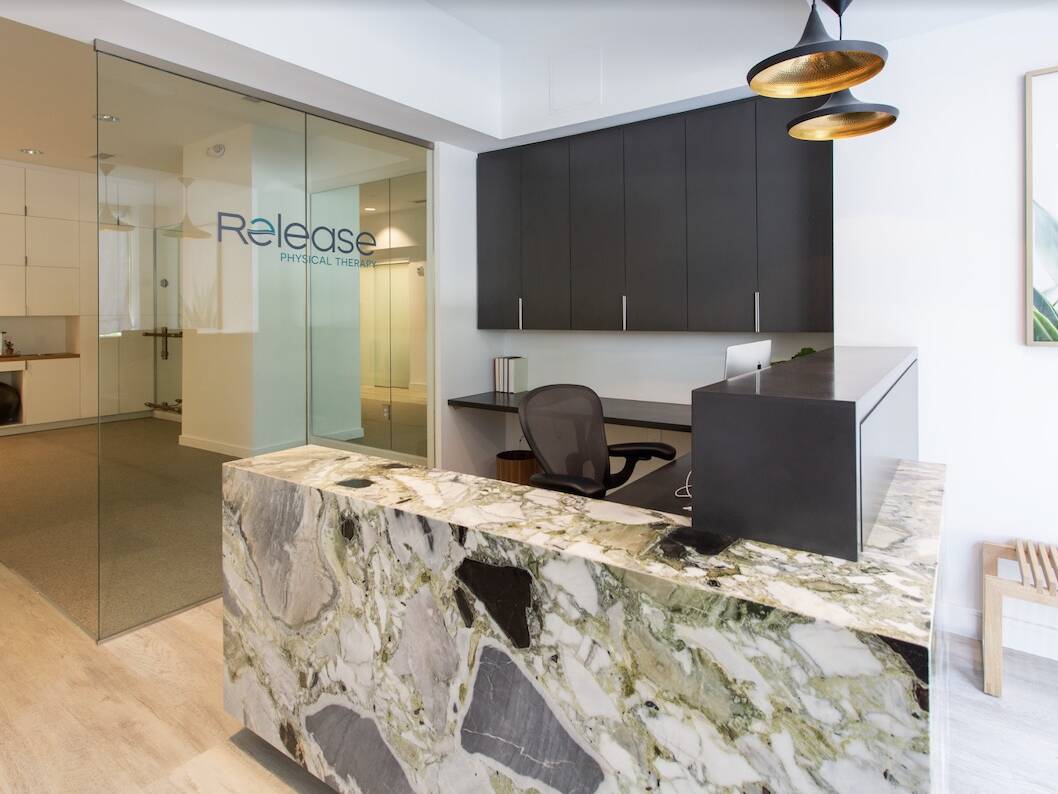
Our Approach
At Release Physical Therapy, we use evidence-based therapies to target the root cause of a condition, not just the symptoms. We offer a full range of treatments, including manual modalities, technology-assisted therapies, and both traditional and non-traditional techniques. We work one-on-one with our patients to develop an individualized treatment plan that meets their unique needs, conditions, wellness goals and fitness levels. Common conditions we treat include:
- Achilles tendonitis
- AC joint injury
- ankle sprains
- ankle fracture
- ACL injuries
- arthritis
- back injury
- back pain
- bursitis
- carpal tunnel syndrome
- cervical radiculopathy
- cervical strains
- chronic pelvic pain
- CL inuries
- compartment syndrome
- degenerative joint disease
- herniated disk
- de Quervain tenosynovitis
- fibromyalgia
- frozen shoulder
- golfer’s elbow
- headaches / migrains
- hip replacements
- ITB syndrome
- impingement syndrome
- knee replacement
- neck pain
- nerve entrapment
- osteoporosis
- osteoarthritis
- overuse injuries
- knee cap pain syndrome
- knee tendinitis
- plantar fasciitis
- rotator cuff tear
- runner's knee
- scoliosis
- sciatica
- shoulder tendinitis
- spinal stenosis
- spondylolisthesis
- shin splints
- tennis elbow
- thoracic outlet syndrome
- TMJ dysfunction
- wrist fracture
- and several others...
What Patients Are Saying
Physical therapy is about results. Too often, patients discontinue therapy because of a bad experience. At Release Physical Therapy, we are committed to providing the highest quality care through patient education, on-going clinician training, and personalized approach to treatment. We believe that everyone should live pain-free and healthy. But don’t take it from us, read what our patients have to say about their experience with Release Physical Therapy.
Our Physical Therapists
Release Physical Therapy staffs the top physical therapists in Washington, DC. Our experienced and highly trained physical therapists specialize in treating the outpatient orthopedic population, including sports therapy, chronic pain management, orthopedic/spinal therapy, pre/post-surgical therapy, as well as wellness and prevention. Our PTs utilize a wide range of therapies and technologies to deliver a personalized care plan. All of our physical therapists are accepting new patients.
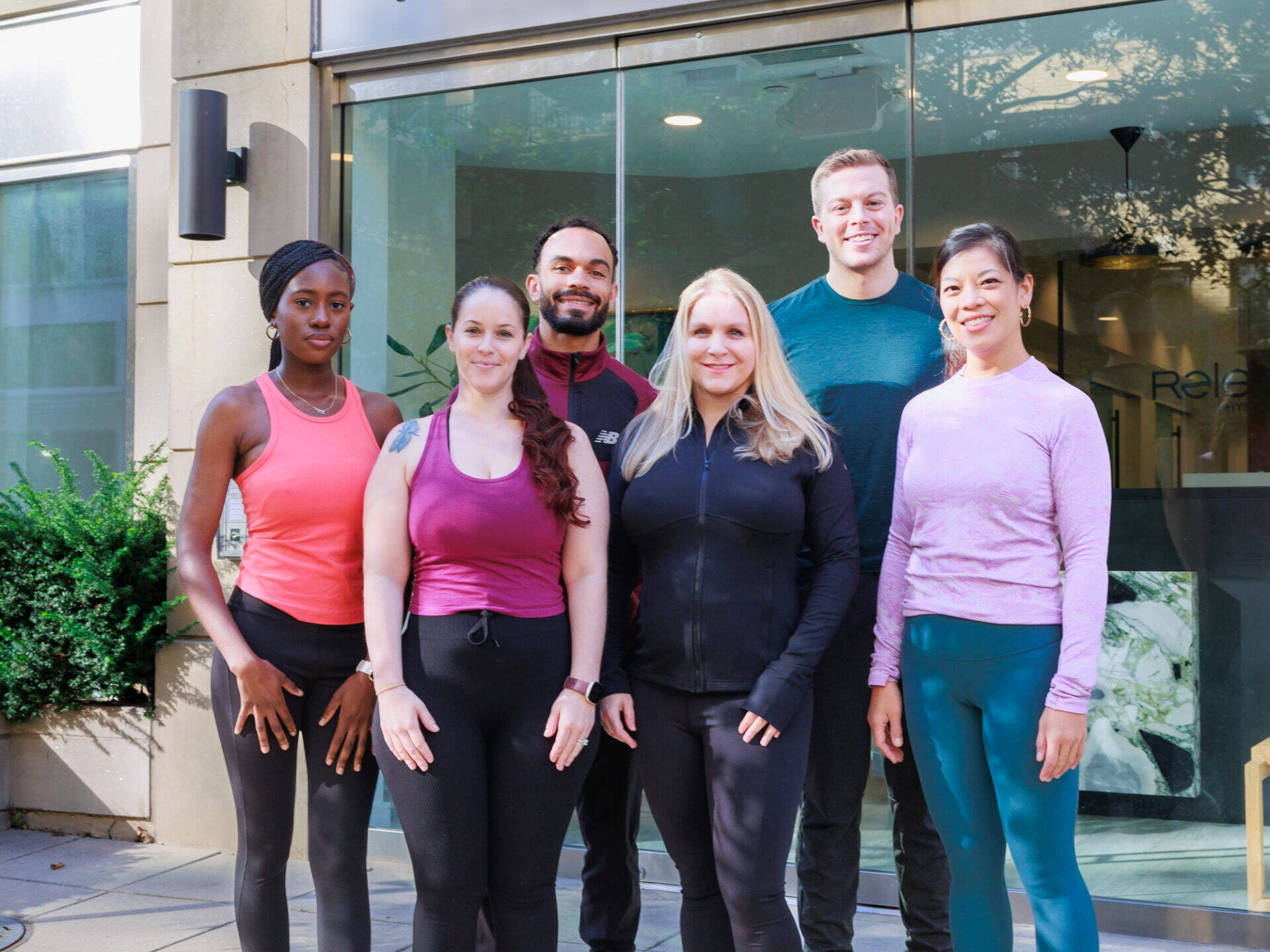
Dr. Cari Simon PT, DPT, CMTPT, ART
Owner & Physical Therapist, Release Physical Therapy Washington, D.C.
Dr. Cari Simon received her Doctorate degree in Physical Therapy from the University of Hartford. A former All-New England and All-State soccer player, she was part of the U.S. Women’s Soccer National Team pool, but ultimately decided to redirect her career in pursuit of her true passion: care. She is now one of the top physical therapists in Washington, DC. As one of the most highly regarded physical therapists in Washington, DC, Dr. Cari Simon’s treatment approach combines manual mobilization and manipulation techniques with individualized therapeutic exercise. She is a full body Active Release Technique (ART) provider. Additionally, Dr. Simon utilizes McConnell, athletic, and Kinesio Taping methods, as well as Trigger Point Dry Needle Therapy. When she is not helping her patients meet their physical goals, Dr. Simon enjoys networking with other physical therapists in Washington, DC, outdoor activities and spending time with her family.
Ethan Gramstad PT, DPT, CMTPT
Physical Therapist, Release Physical Therapy Washington, D.C.
Dr. Ethan Gramstad is the newest addition to the staff at Release Physical Therapy. A native of Virginia, he has recently relocated to Washington, DC following the last two years of practicing PT in Denver, Colorado. He received his Bachelor’s degree from the University of Virginia where he was a member of the UVA Men’s Rowing team for three years. It was that experience that ignited his interest in the science of exercise, as well as physiology and anatomy. He went on to obtain his Doctorate of Physical Therapy from Old Dominion University from Norfolk, Virginia in 2017.
Dr. Gramstad uses manual therapy and mobilization techniques to obtain optimal patient outcomes and places a high priority on establishing a strong patient-therapist relationship. He focuses on assisting his patients in meeting their physical goals and finds satisfaction in the application of individualized exercise programs, as well as dry needling to achieve success. He has previous experience in providing pre and post-operative therapy protocols and treating the outpatient orthopedic population. Besides his rowing days, Dr. Gramstad has personally participated in endurance sports; running Cross Country and multiple marathons and continues to maintain a devotion to a rigorous gym regimen.
Dr. Stephanie Lam PT, DPT, CMTPT
Physical Therapist, Release Physical Therapy Washington, D.C.
Dr. Stephanie Lam received her Doctorate of Physical Therapy from the School of Health Technology and Management at Stony Brook University, after attaining dual degrees in Biology and Psychology from the University of Virginia. She is highly experienced in several fields of adult orthopedics, including post-surgical recovery, acute sports injury rehabilitation, athletic performance improvement, and chronic pain management. She also has a passion for pediatrics and has treated kids of all ages for congenital and developmental issues.
Dr. Lam uses her patient’s individual goals to guide treatment, addressing her patient’s symptomatic impairments while considering their day-to-day ability to function and perform athletic and recreational activities. Dr. Lam incorporates manual therapy throughout her treatments, specializing in extensive deep soft tissue manipulation and mobilizations of the spine and peripheral joints, as well as dry needling.
Deborah Ajala PT, DPT, COMT, CMTPT
Physical Therapist, Release Physical Therapy Washington, D.C.
Dr. Deborah Ajala is an astute physical therapist who takes her time to get to know her patients in order to provide the best possible care. Dr. Ajala’s lifelong passion for caregiving led her to a career in physical therapy. She received a Bachelors degree in Health Sciences with a minor in Exercise Science and Wellness Management from the University of Sciences in Philadelphia, where she obtained a Doctorate in Physical Therapy thereafter. Dr. Ajala holds certifications in Orthopedic Manual Therapy (COMT) and Trigger Point Dry Needling (CMTPT). Her goal with each patient is to optimize their return to function.
Dr. Ajala previously worked at an Outpatient Physical Therapy Clinic in Maryland as a staff clinician. There, she served a diverse patient population treating a wide range of orthopedic conditions including sports medicine, pre/post operative rehabilitation, overuse injuries and several others.
In her free time, Dr. Ajala enjoys spending time with her family and friends, reading, and sports. She also enjoys exploring new DC neighborhoods and is a restaurant enthusiast.
Mia Smyser PT, DPT, COMT, CIDN
Physical Therapist, Pelvic Floor Therapist, Release Physical Therapy Tysons and Washington, D.C.
Dr. Mia Smyser is a native of the DMV. She received her Doctorate in Physical Therapy from the University of Miami, after receiving her Bachelors of Science in Exercise Science from the University of South Carolina. She thinks movement is of foundational importance and is dedicated to improving people’s mobility and function and helping them achieve their optimal physical well-being.
She is passionate about continuing to learn and grow in the profession. She is a Certified Orthopedic Manual Therapist (COMT), certified in Integrative Dry Needling and is continuing her coursework with Herman & Wallace as a pelvic health therapist.
Dr. Smyser previously worked at outpatient physical therapy clinics in Washington, DC and Falls Church, VA, treating a wide variety of conditions including sports medicine, pelvic health, pre/post-operative rehabilitation, and pediatrics, among others.
In her free time, she prioritizes spending time with her husband, son & dog; playing soccer and running; coaching HIIT and checking out new restaurants.
Paul Miller LMT
Massage Therapist, Release Physical Therapy Washington, D.C.
Paul Miller is a dedicated massage therapist with expertise in medical massage, deep tissue therapy, and myofascial release. Paul customizes each session to meet the unique needs of his clients, focusing on relieving tension, restoring mobility, and enhancing overall physical well-being.
Trained at the Northern Virginia School of Therapeutic Massage, Paul has also completed all three of Howard Rontal’s Myofascial Release courses, further refining his ability to address chronic pain and movement restrictions. His approach is rooted in the belief that targeted, intentional bodywork can be a transformative tool for recovery and long-term health.
Release Physical Therapy Treatments
Our experienced physical therapists have advanced training in outpatient orthopedic physical therapy. Our physical therapy services include sports therapy, injury rehabilitation, pre-surgical therapy, post-surgical therapy, chronic pain management, as well as wellness and prevention. Specialized treatments at Release Physical Therapy include:
Shockwave Therapy
A non-invasive medical treatment that utilizes acoustic waves to treat various musculoskeletal conditions and promote healing.
K-Laser Therapy
The use of specific wavelengths of light to improve healing time, pain reduction, increase circulation and decrease swelling.
Dry Needling Washington DC
Needle treatment that decreases pain, increases range of motion and improves strength by inactivating myofascial trigger points.
Active Release Technique in Washington, D.C.
Massage and movement-based technique that treats problems with muscles, tendons, ligaments, fascia and nerves.
Therapeutic Medical Massage
Reduces muscular pain and inflammation, relaxes overused muscles, improves posture and movement awareness, and enhances performance.
BFR Training Washington DC
Rehabilitation therapy and performance training technique using a personalized tourniquet system to reduce atrophy and increase strength.
Kineseo® Taping Method
Reduces muscular pain and inflammation, relaxes overused muscles, improves posture and movement awareness, and enhances performance.
Running Assessment Washington DC
Individualized analysis designed to identify strength, gait, and alignment imbalances to prevent injury and improve your current training program.
Functional Training
Exercise regimens that integrate multiple muscle groups, joints and the brain to assist in everyday movement, physical activities and athletics.
Graston Technique
Instrument-assisted soft tissue mobilization used to address soft tissue lesions and fascial restrictions resulting in improved patient outcomes.
Release Physical Therapy Services
At Release Physical Therapy, we treat you with our hands, not just machines. We offer a full range of manual therapies, as well as both traditional and non-traditional techniques for the best in comprehensive care. We work one-on-one with our patients to develop an individualized treatment plan that meets their unique needs, conditions, wellness goals and fitness levels.
Physical Therapy Treatment for Pelvic Floor Issues
At Release Physical Therapy, our experienced therapists conduct a thorough assessment to identify the underlying causes of your pelvic floor issues and create a personalized treatment plan to promote healing and alleviate the problems you’re experiencing.
Physical Therapy Treatment for Upper Back/Shoulder Pain
At Release Physical Therapy, our experienced therapists perform comprehensive assessments to see how they can help with your upper back pain. We then design individualized treatment plans aimed at promoting healing and relieving your specific issues.
Physical Therapy Treatment for Lower Back Pain
At Release Physical Therapy, our seasoned therapists perform comprehensive assessments to pinpoint the root causes of your lower back pain problems. We then design individualized treatment plans aimed at promoting healing and relieving your specific issues.
Physical Therapy Treatment for Knee Pain
At Release Physical Therapy, our seasoned therapists perform comprehensive assessments to pinpoint the root causes of your knee pain problems. We then design individualized treatment plans aimed at promoting healing and relieving your specific issues.
Physical Therapy Treatment for Ankle Pain
At Release Physical Therapy, our experienced therapists conduct thorough assessments to identify the underlying causes of your ankle discomfort. From there, we craft personalized treatment strategies tailored to foster healing and alleviate your unique concerns.
Physical Therapy Treatment for Tennis Elbow Pain
At Release Physical Therapy, our seasoned therapists perform comprehensive assessments to pinpoint the root causes of your tennis elbow pain problems. We then design individualized treatment plans aimed at promoting healing and relieving your specific issues.
Physical Therapy Treatment for Arthritis
At Release Physical Therapy, our expert therapists conduct thorough assessments to gain insight into your arthritis symptoms. With this understanding, we craft personalized treatment strategies aimed at promoting healing and addressing your unique requirements.
Release Physical Therapy Location & Hours
Visit us at our convenient West End Washington DC location. We pride ourselves on providing the highest level of care and convenience to our patients. Our appointment times flexible – let us know how we can best accommodate you.
Release Physical Therapy - Washington DC
2134 L St NW
Washington, DC 20037
Get Directions
Location Hours
Mon - Thurs: 6:00am - 8:00pm
Fri: 6:00am - 5:00pm
Sat - Sun: Closed
Now Accepting New Patients
Feel Your Very Best
Whether you’re an athlete that plays hard on the field, or a weekend warrior that plays hard in life, committing to a physical therapy program can help to keep you moving forward.
Latest Blog Posts
Follow us on Instagram!
Error: No feed with the ID 2 found.
Please go to the Instagram Feed settings page to create a feed.













